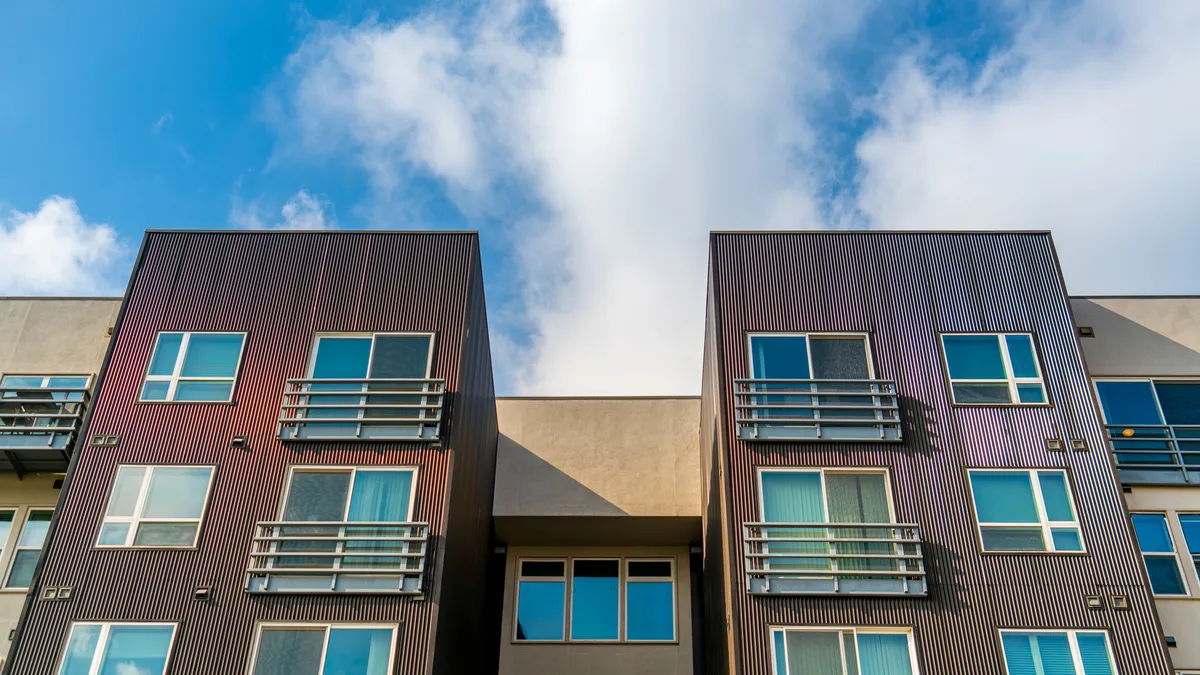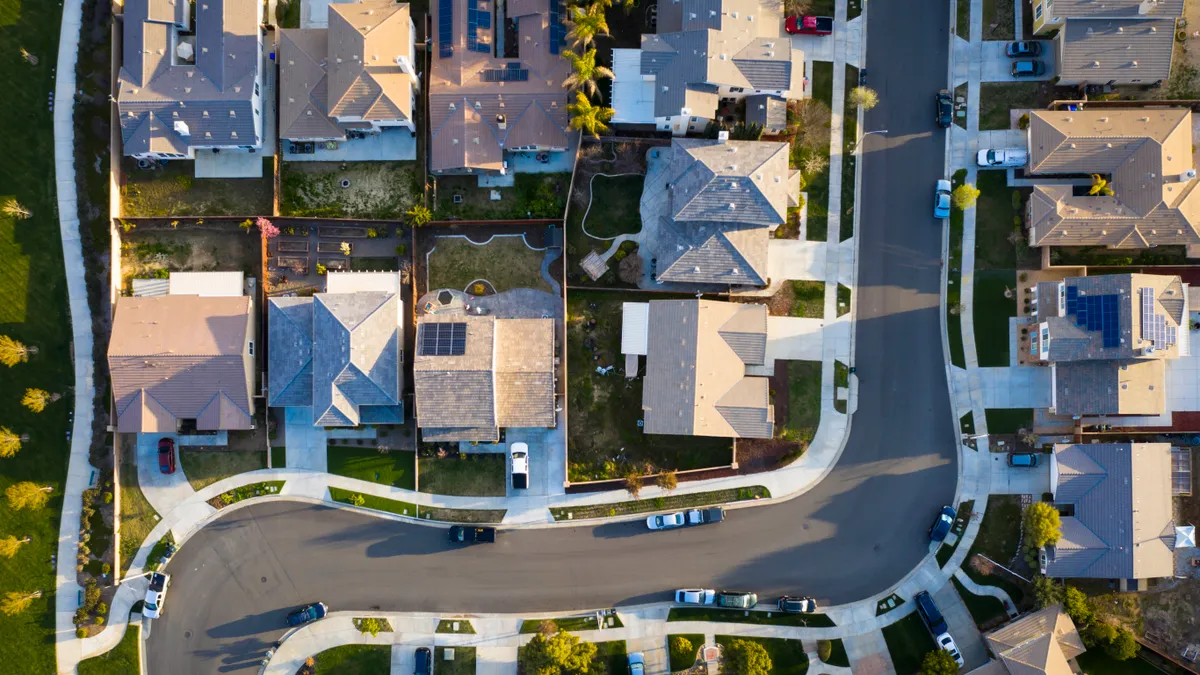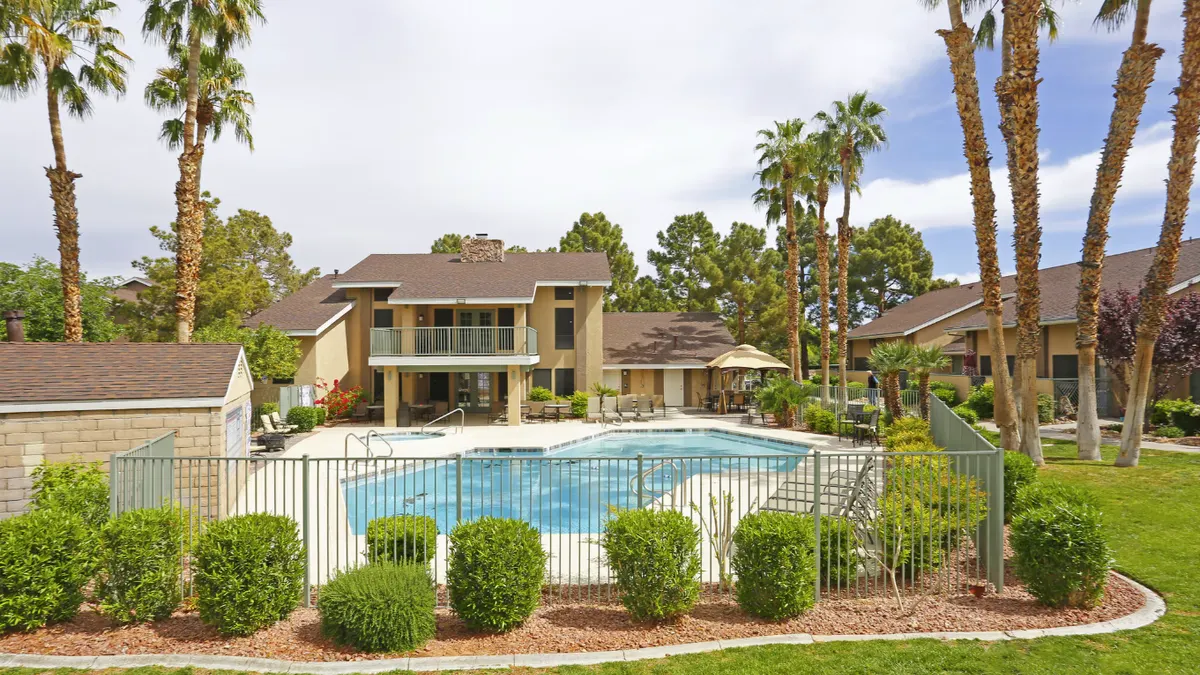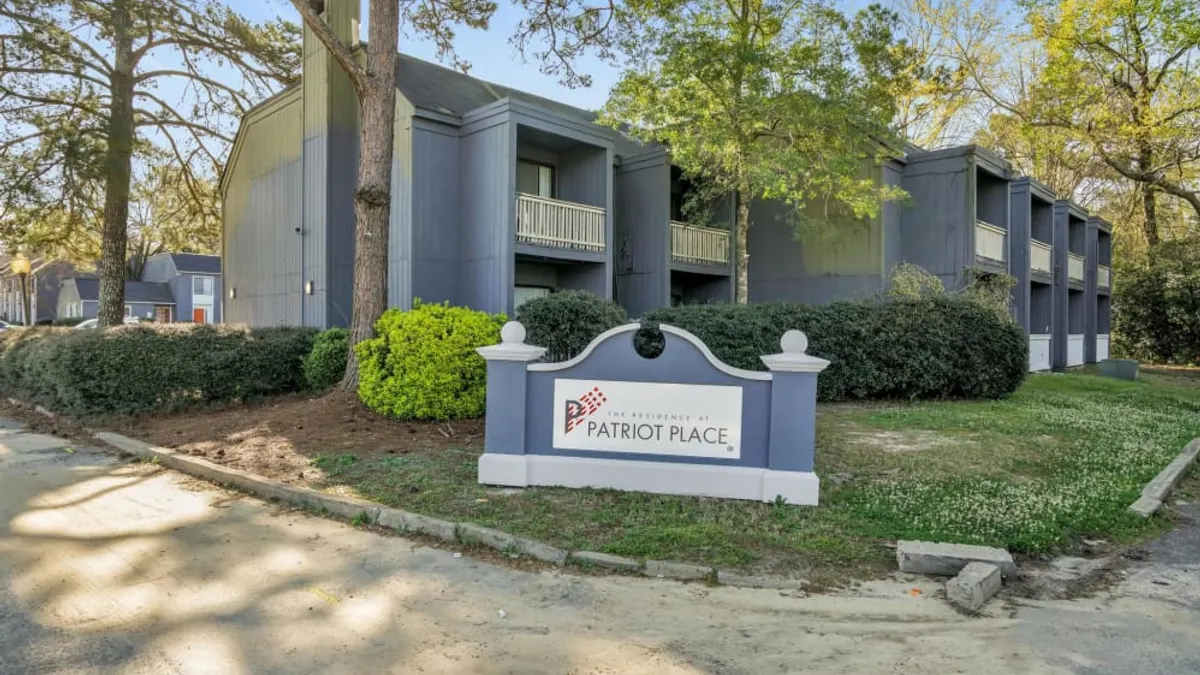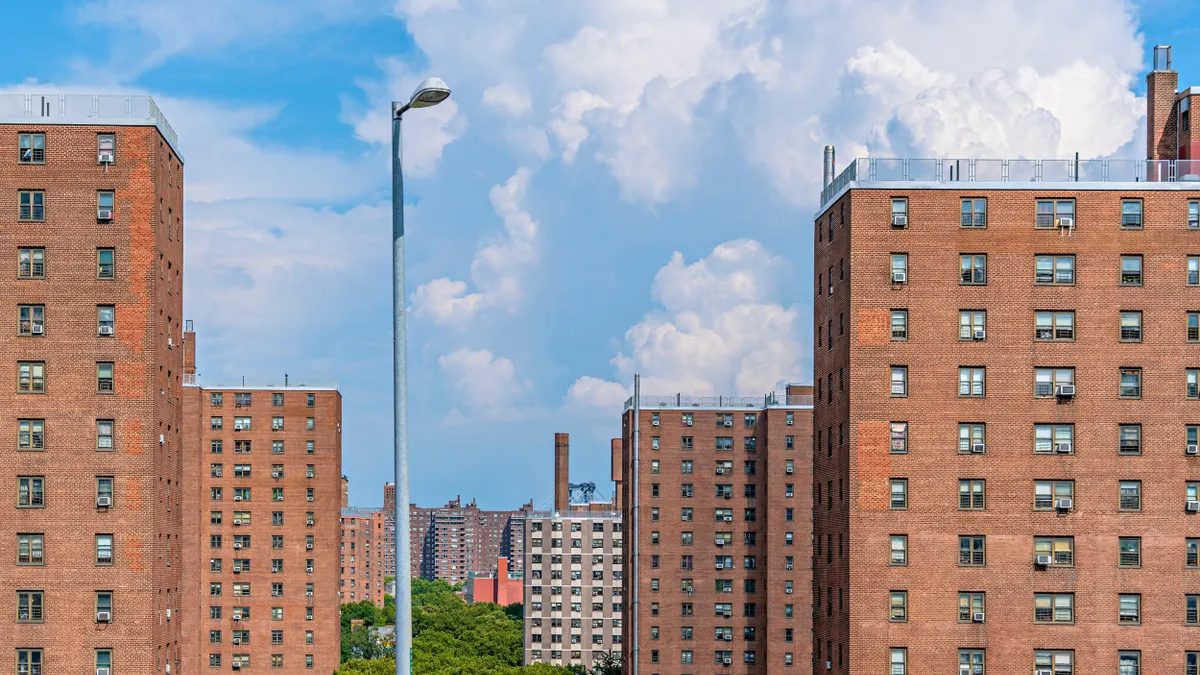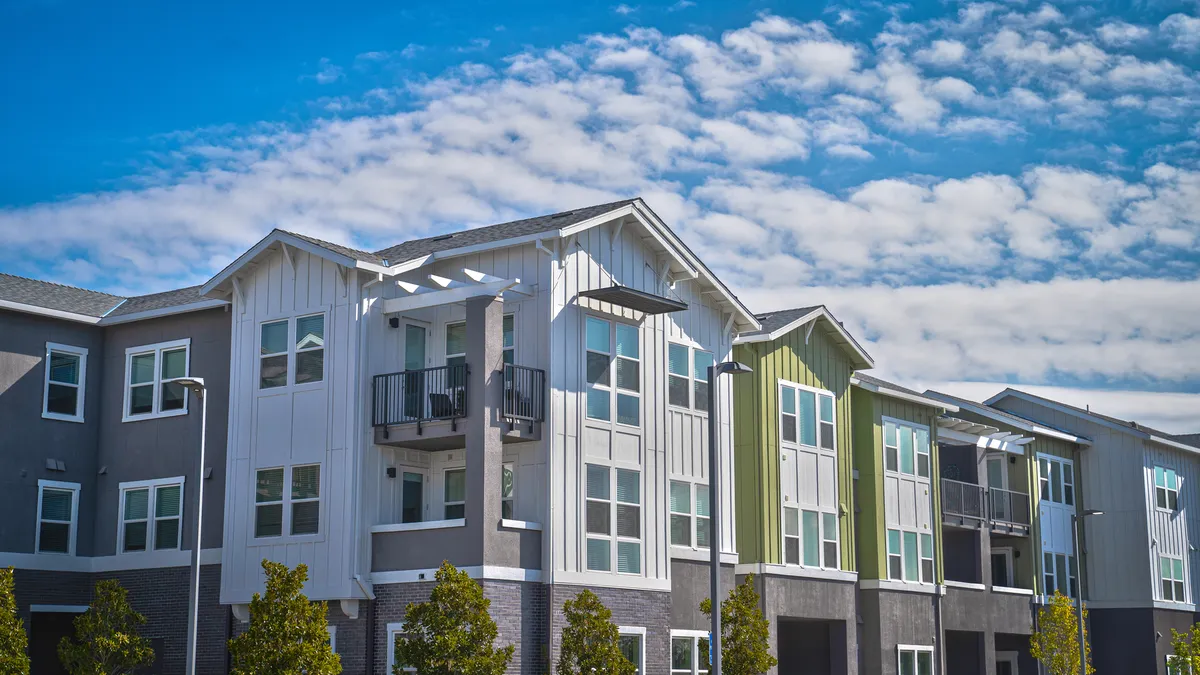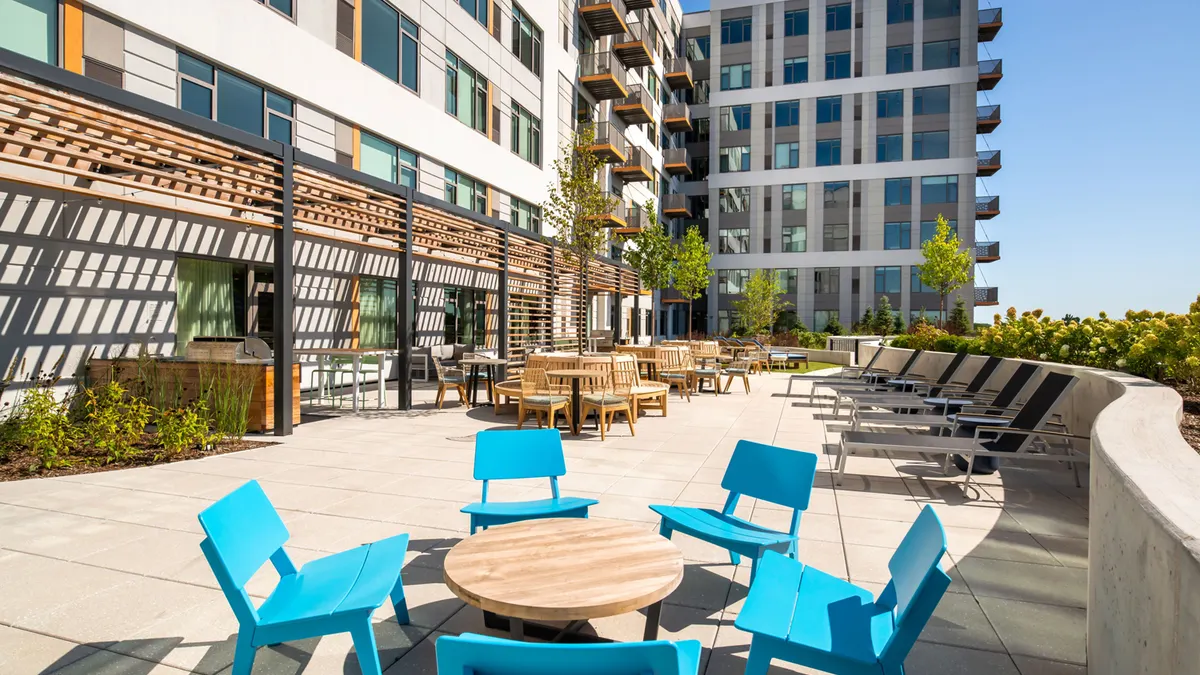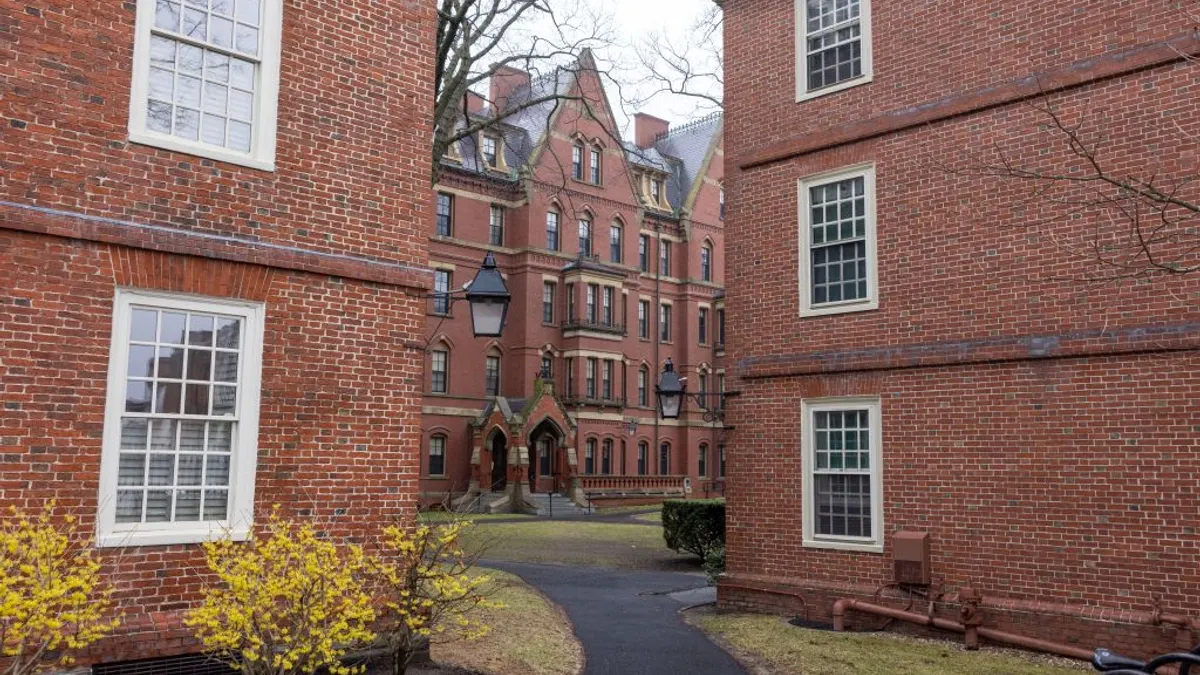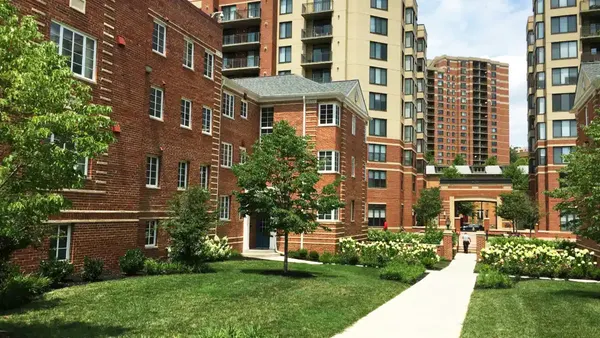Cityview started the year at a torrid transaction pace, posting its strongest first quarter ever.
The Los Angeles-based apartment owner and manager, which recently opened a New York office as a springboard to investment in the eastern U.S., bought and sold nine properties.
Then, “Liberation Day” arrived on April 2, and President Donald Trump announced tariffs, dragging down second-quarter numbers.
“Everything shut down,” Sean Burton, CEO and chairman of Cityview, told Multifamily Dive. “Investors were scared. Any kind of turmoil gives investors a reason to pause.”
The numbers back that up. Apartment sales volume fell 14% year over year to $35.1 billion in the second quarter of 2025, according to a report that data firm MSCI Real Assets shared with Multifamily Dive. However, they rose 5% to $66.6 billion in the first half of the year.
So, what can investors expect for the rest of the year? Will volume continue to slow like it did in Q2? Or will the quarter prove to be a blip in an otherwise improving sales market?
Apartment executives are betting that volume will increase, but maybe not as much as they expected.
“The year will probably be bigger than last year from the market perspective on the sales front, but not as much as we were hoping at the beginning of the year,” said Kyle Draeger, executive managing director at Dallas-based CBRE Multifamily Capital.
Still, Draeger and others remain optimistic that things will improve in the second half of the year. Here are three reasons why.
1. Buyers are learning to live with turmoil
Investors like certainty. But since the Federal Reserve began raising interest rates more than three years ago, they’ve had anything but.
“We're dealing with tariffs,” Jim Brooks, president of Los Angeles-based real estate investor BH Properties, told Multifamily Dive. “We're dealing with elevated interest rates, and not a lot of cuts are projected. So there is a high cost of capital. Things have gotten slower on the capital market side.”

However, Jeffrey Dunne, vice chairman at CBRE, said he expects volume to pick up as buyers and sellers accept that the 10-year Treasury will probably remain in the 4% to 4.5% range going forward.
“Everyone has been waiting for Treasury rates to go down,” Dunne said. “I think the market has concluded that's not happening. So there's more selling because there's more acceptance of that.”
In a volatile market, acquisitions can also offer more certainty than other investments, such as development.
“With the tariffs and future costs that are a little bit unknown, we're seeing groups probably a little bit less likely to deploy equity into development,” said Brad Williamson, managing director in Miami for New York City-based commercial real estate services firm Berkadia. “They would rather deploy capital into a traditional acquisition, where you can close the transaction in 60 to 90 days.”
Even if rates fluctuate, many observers believe that buyers and sellers have simply learned to adapt to the uncertainty. “I think that the market has gotten accustomed to volatility,” said Sharon Karaffa, president of multifamily debt and structured finance for New York City-based real estate services provider Newmark’s Multifamily Capital Markets Division. “If you want to transact, you just have to deal with it.”
Burton agrees. “Even though there's turmoil, people have a handle on what it's going to look like,” he said. “So we think the second half of the year will be solid — maybe not as strong as we thought in January, but definitely solid.”
2. Money is available
Once firms accept market conditions, the money and desire should be there to buy apartments in the second part of the year, according to experts.
Dunne said capital wants to buy apartments more than any other asset in the commercial real estate sector, which should stimulate demand for properties coming to market. However, those buyers will only do deals at what they consider a reasonable price.
“The demand is strong,” Dunne said. “They're disciplined. No one's being stupid. We have a lot of activity. We have a lot more sales we'll do this year.”
One of those groups getting more aggressive is Toronto-based investment and management firm Slate Asset Management, which paid $226.5 million to acquire 1,600 units of apartments across six properties from Tampa, Florida-based apartment owner ZMR Capital.
“We're starting to feel that bid-ask spread [between sellers and buyers] is narrowing and getting to a point where we could make solid fundamental bets on real estate,” said Peter Tsoulogiannis, partner and chief investment officer at Slate Asset Management.

Institutional buyers had been sitting on the sidelines. However, Williamson said they’re starting to come back, even if they’re resistant to publicly disclosing their activity.
“We are seeing an uptick with institutional limited investors in the multifamily space, which has not been the case over the last 12 to 24 months,” he said.
Still, private players, such as BH Properties, see an opportunity to make deals before the institutions have fully returned. “We're optimistic, just given the way we're capitalized and the way we can operate,” Brooks said. “Privately capitalized investment groups should have their moment in the sun before institutional capital comes flooding back in.”
3. More properties will hit the market
With plenty of money sitting on the sidelines, the biggest driver of second-half deal flow may just be whether there are enough properties to hit the market at the right price. “There haven't been a lot of deals on the market,” Williamson said. “So, there's not enough supply, and that's part of the issue.”
If Treasuries were to fall 25 to 50 basis points — no guarantee, even if the Federal Reserve cuts interest rates — Williamson said he sees more properties hitting the market. However, other industry executives are optimistic about more buying opportunities in 2025 and beyond, regardless.
“We're seeing a lot more transactions hit the market,” Cityview’s Burton said. “We're seeing things start to trade.”
“I think that the market has gotten accustomed to volatility. If you want to transact, you just have to deal with it.”
Sharon Karaffa
President of multifamily debt and structured finance for Newmark’s Multifamily Capital Markets Division
Dunne said CBRE is preparing to put “some large stuff” on the market this fall. But, despite the money amassed on the sidelines, he said the reception from the “market is to be determined.”
“For the last two years, the money didn't want to go big,” Dunne said. “They wanted to tiptoe back into the market — not do $300, $400 or $500 million deals. “It's a lot easier to sell a deal between $40 and $100 million than it is $200 million-plus.”
Owners — or their banks — who hadn’t necessarily planned to sell could also be bringing more assets to market this fall.
“Some people need to sell,” Dunne said. “They need to sell because they have debt coming due.”
A $120 billion wave of commercial real estate loans is set to mature before the end of 2026 with an in-place debt service coverage ratio below 1.20x, according to Trepp. The data firm said that multifamily loans are the “largest slice of upcoming maturity volume” and “a key hunting ground for acquisition opportunities” for apartment investors.
Brooks sees the opportunity to be one of those hunters. “There's a lot of money on the sidelines, but there's still a mountain of distress out there that has to be navigated and worked through,” he said. “Those are good opportunities for firms like us.”
Click here to sign up to receive multifamily and apartment news like this article in your inbox every weekday.


